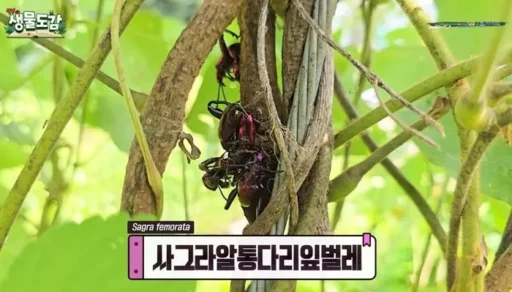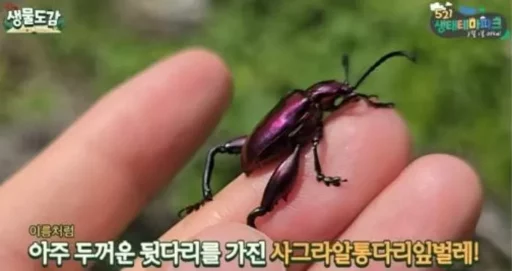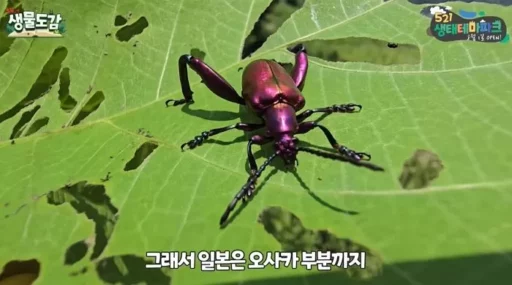Southeast Asian Pest 'Altongdari Leaf Bug' Discovered for the First Time in Southern Korean Peninsula, Raising Concerns Over Crop Damage
A pest that primarily inhabits Southeast Asia has been discovered for the first time in the southern Korean Peninsula, raising concerns among agricultural experts.
In a video released on the YouTube channel 'TV Plant Encyclopedia' on the 29th of last month, a group of 'Altongdari Leaf Bugs' was captured residing on the stems of kudzu near the southern coast.
The biological YouTuber who posted the video expressed serious concerns, stating, "This should not exist in our country."

This insect is characterized by its pinkish glossy exoskeleton and thick hind legs, earning it the nickname 'tropical jewel beetle.'
This species primarily inhabits regions in Southeast Asia, particularly Indonesia. In the video, it was introduced as 'Sagra Altongdari Leaf Bug,' but there is currently no official Korean name for it.
The northward movement of tropical pests due to climate change, potential crop damage
The reason the Altongdari Leaf Bug is particularly problematic is that this insect can cause serious damage to crops.
It gnaws at the leaves and stems of plants, ruining agriculture, and has a tendency to burrow into the stems of climbing plants such as grapevines, disrupting plant growth.

This species, which primarily distributes in tropical regions, has no similar species in South Korea and is a dangerous pest that requires immediate disinfection upon entry. There have been records of it entering South Korea through foreign vessels in 2012, 2014, and 2021, but there have been no confirmed cases of settlement in the country to date.
Experts point to climate change as a major reason for these tropical pests establishing themselves in South Korea. Insects are highly sensitive to temperature changes, and the northward movement of tropical insects can be seen as evidence that the climate in the Korean Peninsula has warmed significantly.

A representative from the Animal and Plant Quarantine Agency stated, "We recognized the occurrence of this species following its introduction on a recent YouTube channel. We plan to conduct a joint survey with the National Institute of Ecology under the Ministry of Environment, and after confirming the degree and extent of its occurrence, we will discuss future measures with related agencies."
Image source: youtube 'tv 식물도감'


